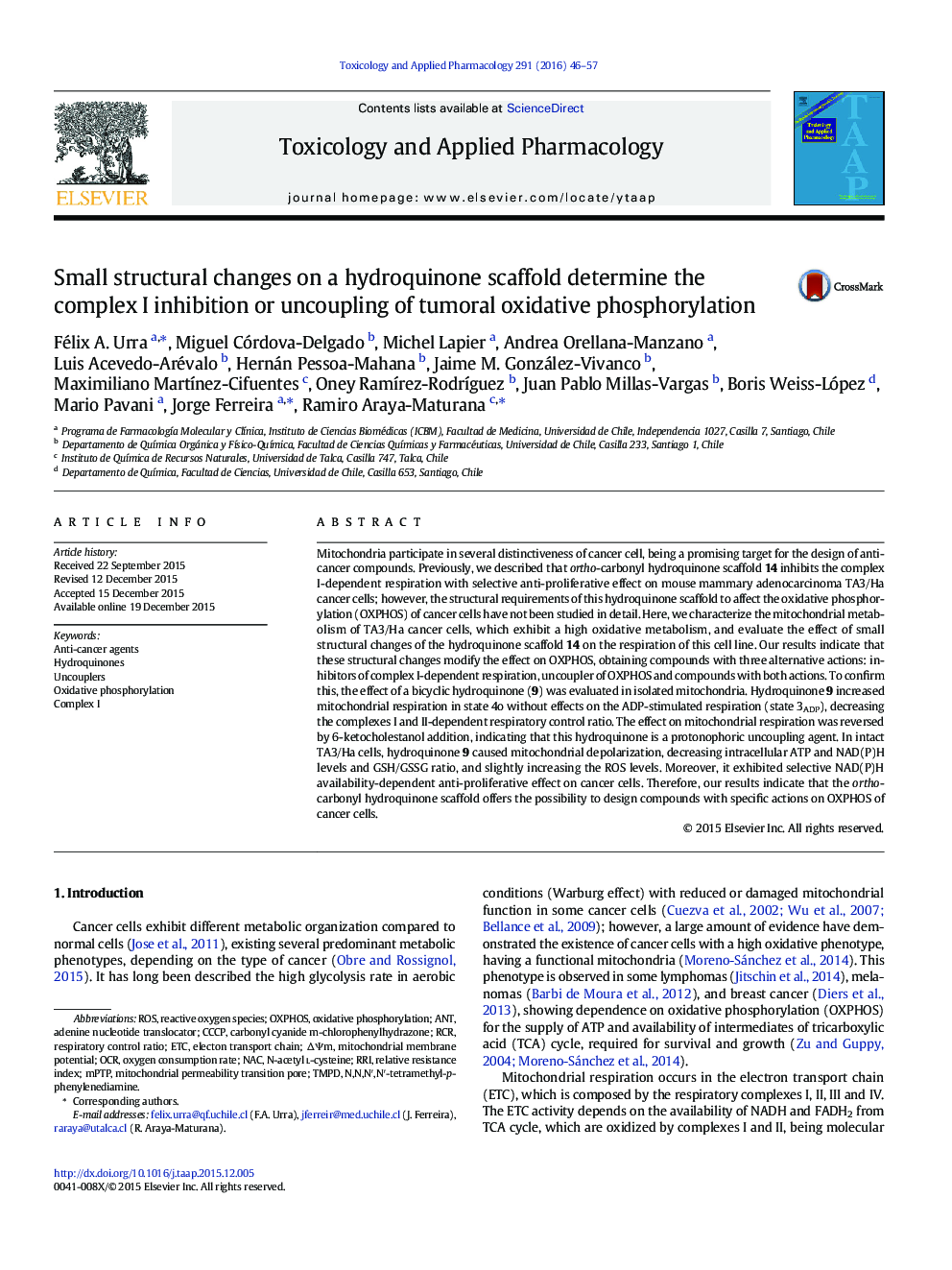| کد مقاله | کد نشریه | سال انتشار | مقاله انگلیسی | نسخه تمام متن |
|---|---|---|---|---|
| 2568202 | 1561171 | 2016 | 12 صفحه PDF | دانلود رایگان |
• Small changes on a hydroquinone scaffold modify the action on OXPHOS of cancer cells.
• Complex I Inhibitors, uncoupler of OXPHOS and agents with dual action are described.
• Cpd. 9 is an uncoupler agent of OXPHOS with selective anti-proliferative effects.
• Useful information to design agents with a selective mechanism on OXPHOS is provided.
Mitochondria participate in several distinctiveness of cancer cell, being a promising target for the design of anti-cancer compounds. Previously, we described that ortho-carbonyl hydroquinone scaffold 14 inhibits the complex I-dependent respiration with selective anti-proliferative effect on mouse mammary adenocarcinoma TA3/Ha cancer cells; however, the structural requirements of this hydroquinone scaffold to affect the oxidative phosphorylation (OXPHOS) of cancer cells have not been studied in detail. Here, we characterize the mitochondrial metabolism of TA3/Ha cancer cells, which exhibit a high oxidative metabolism, and evaluate the effect of small structural changes of the hydroquinone scaffold 14 on the respiration of this cell line. Our results indicate that these structural changes modify the effect on OXPHOS, obtaining compounds with three alternative actions: inhibitors of complex I-dependent respiration, uncoupler of OXPHOS and compounds with both actions. To confirm this, the effect of a bicyclic hydroquinone (9) was evaluated in isolated mitochondria. Hydroquinone 9 increased mitochondrial respiration in state 4o without effects on the ADP-stimulated respiration (state 3ADP), decreasing the complexes I and II-dependent respiratory control ratio. The effect on mitochondrial respiration was reversed by 6-ketocholestanol addition, indicating that this hydroquinone is a protonophoric uncoupling agent. In intact TA3/Ha cells, hydroquinone 9 caused mitochondrial depolarization, decreasing intracellular ATP and NAD(P)H levels and GSH/GSSG ratio, and slightly increasing the ROS levels. Moreover, it exhibited selective NAD(P)H availability-dependent anti-proliferative effect on cancer cells. Therefore, our results indicate that the ortho-carbonyl hydroquinone scaffold offers the possibility to design compounds with specific actions on OXPHOS of cancer cells.
Figure optionsDownload high-quality image (127 K)Download as PowerPoint slide
Journal: Toxicology and Applied Pharmacology - Volume 291, 15 January 2016, Pages 46–57
